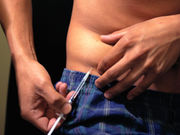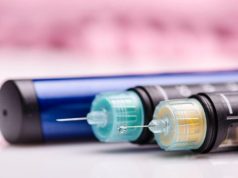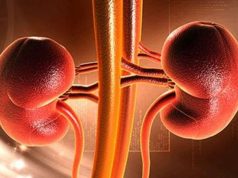ApoA4, CD5L, C1QB, IBP3 may improve prediction of rapid decline in renal function in type 2 diabetes
MONDAY, Sept. 11, 2017 (HealthDay News) — Plasma biomarkers that may improve the prediction of rapid decline in renal function in type 2 diabetes have been identified, according to a study published online Aug. 29 in Diabetes Care.
Kirsten E. Peters, Ph.D., from the University of Western Australia, and colleagues measured baseline biomarkers in 345 community-based patients from the Fremantle Diabetes Study Phase II. Clinical predictors of rapid estimated glomerular filtration rate (eGFR) decline trajectory defined by semiparametric group-based modeling were determined.
The researchers found in an eGFR trajectory analysis that 10.1 percent of participants were rapid decliners, with a mean decrease of 2.9 mL/min/1.73 m²/year. Plasma apolipoprotein (apo) A-IV (apoA4), CD5 antigen-like (CD5L), and complement C1q subcomponent subunit B (C1QB) independently predicted rapid decline after adjustment for clinical predictors (odds ratios, 2.4, 0.52, and 2.41, respectively), and they improved model performance and fit, discrimination (area under the curve, 0.75 to 0.82), and reclassification (net reclassification index, 0.76; integrated discrimination improvement, 6.3 percent). Together with insulin-like growth factor binding protein 3 (IBP3), these biomarkers contributed to improved model performance in predicting other indices of rapid eGFR decline.
“The current study has identified novel plasma biomarkers (apoA4, CD5L, C1QB, and IBP3) that may improve the prediction of rapid decline in renal function independently of recognized clinical risk factors in type 2 diabetes,” the authors write.
Several authors are employees of Proteomics International. Proteomics International and the University of Western Australia are owners of a patent relating to the biomarkers described in the study, and several authors are named inventors on the patent.
Abstract
Full Text (subscription or payment may be required)
Copyright © 2017 HealthDay. All rights reserved.








